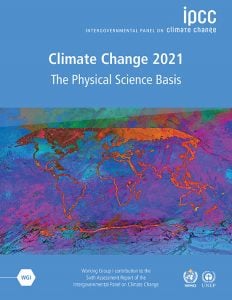Posts Tagged: Policy
Write a Letter
Building greater sustainability takes a village. Writing a letter to the editor of a local (or national) news source, or posting a note to social media or any other “public square” is one of the most direct steps you can take to influence and bring change. And it’s easier than many think to get published.
Freedom of the press is not just important to democracy, it is democracy.
~ Walter Cronkite
Small action. Big results.
A letter can accomplish many things:
- Inform. The topic of sustainability is broad. Letters can help provide background on specific elements, and how different elements fit together.
- Amplify. We are all “swayed” by what we hear. Topics that are discussed more get greater attention. Every additional voice for sustainability elevates the topic and demonstrates its importance.
- Positive action. Elected officials, business leaders, and community members all seek to be “in step” with public opinion. A constant stream of public dialogue around sustainability builds momentum for constructive action.
- Action lever. A published letter can be a great tool to request a meeting (and prompt attention) from public officials and other leaders in the community. It can also generate follow-on community interest.
Keys to an effective letter
- Simple. A good letter conveys a straightforward message. The “take away” is clear.
- Attention-getting. A good letter attracts the attention of readers because it includes a “hook” that resonates.
- Topical. A good letter will address how to build greater sustainability.
Some tips to get a letter read
- Choose a reference that resonates! Use a current event, news item, or topic of attention as a hook to bring your message about sustainability to readers.
- Use facts. Footnotes to show sources are helpful. Try not to repeat second hand assertions.
- Be positive. No need to disparage or demonize anyone. Be respectful. Humor and wit go a long way to opening others’ mind to issues, challenges, and potential ways forward. Is your letter written in a way that would make members of your family proud?
- Stay focused on your message. One issue for one letter is PERFECT! Published letters generally are very short. The same advice is good for longer submissions as well, e.g., and op-ed should develop a single, clear, focused message.
- Offer a solution or constructive step. Ask readers to join to reach a common goal. Presenting a call to action can be a powerful tool. Offering resources can also be very helpful to build awareness, generate enthusiasm, and prompt participation.
- Close strong. Rhetorical devices like repetition can be effective.
Practical Tips
- If you are sending your letter to a publication, it’s especially important to be timely and topical. A response to an article, story, or event should be within two or three days.
- It can be helpful to mention elected or public officials, especially if the issue is one voters are talking about, e.g., a new rule or referendum related to sustainability.
- Refer directly to whatever your letter is responding to as it appeared in the publication, e.g., story title and page number.
- Follow any submission guidelines, e.g., max word count. Make your submission part of the email, not a separate attachment that might be lost.
Additional Resources
IPCC Rolling Out 6th Global Assessment
The Intergovernmental Panel on Climate Change (IPCC) has published a report Climate Change 2021: The Physical Science Basis. The report is part of the IPCC’s 6th global assessment of Earth’s climate.

The IPCC is the United Nations body for assessing the science related to climate change. The IPCC provides scientific assessments on climate change. IPCC assessments address relevant impacts and potential future risks. The IPCC was created in 1988, and now has 195 Member countries.
Through its assessments, the IPCC determines the state of knowledge on climate change. It identifies where there is agreement in the scientific community on topics related to climate change, and where further research is needed. The IPCC seeks to present adaptation and mitigation options.
The report addresses the most up-to-date physical understanding of the climate system and climate change, bringing together the latest advances in climate science, and combining multiple lines of evidence from paleoclimate, observations, process understanding, and global and regional climate simulations.
Key findings from the report:
The Earth is warming faster than previously thought.
Unless there are immediate, rapid and large-scale reductions in greenhouse gas emissions, limiting warming to close to 1.5°C or even 2°C will be beyond reach.
Climate change is impacting the whole world.
Climate change is already affecting every region on Earth, in multiple ways. Impacts are not uniform; some areas will be harder hit than others. The nature and degree of risk will vary across regions.
Climate Change 2021: The Physical Science Basis is the result of tremendous, worldwide collaboration. More than 200 authors from 66 countries as well as more than 500 additional contributors drafted the report, which includes over 14,000 cited references. This report is the first of several to be released by the IPCC as part of the current global assessment. The synthesis report is expected to be published in the spring of 2022.
© 2021. IPCC Rolling Out is an original post from Yaroki, and may not be copied on other sites.
IEA PROMOTES GREEN ENERGY
The International Energy Agency or IEA was created in 1974 in response to the 1973 oil crisis with a mission to promote oil security and coordinate a collective response to any major disruptions in the supply of oil.
For years, IEA’s focus was primarily on oil and fossil fuels. But in more recent years, the IEA has broadened its vision to include sustainable sources of energy. Now, the IEA recommends policies that enhance the reliability, affordability, and sustainability of energy. This year, the organization has doubled down on that approach, releasing reports that lay out a path to zero carbon energy grid, and propose pathways to finance those energy sources.
The fact that an organization like the IEA has now pivoted toward renewables and is devoting its effort to their promotion reflects a seismic shift in global thinking and sends a strong signal that clean energy and a zero carbon future are not pipe dreams of well-intentioned, but largely irrelevant “fringe.” Rather, these are achievable objectives and potentially highly profitable ones to those that recognize the opportunity.
IEA Net Zero Report
The pathway set out in the IEA report calls for a smaller total energy supply serving a greater number of world inhabitants. Nearly 90% of electricity would come from renewable sources, mostly solar. Solar PV and wind together would account for 70%. Near-term reductions would come from existing technology. Out-year reductions would come from developing and new technology, advanced batteries, electrolysers for hydrogen, and direct air capture and storage, for example. Other highlights of the Net Zero Report include:
- No investment in new fossil fuel supply projects, and no further final investment decisions for new unabated coal plants.
- Major worldwide energy efficiency effort to reduce overall demand.
- No sales of new internal combustion engine passenger cars beyond 2035.
- Net-zero emissions from the global electricity sector by 2040.
The IEA Report projects a surge in total annual energy investment to $5 trillion by 2030. Based on work by the International Monetary Fund, the Report anticipates that global GDP would increase almost half a percent per year with millions of new jobs. By 2030, global GDP would be 4% higher than the current growth line.

IEA (2021), Financing clean energy transitions in emerging and developing economies, IEA, Paris https://www.iea.org/reports/financing-clean-energy-transitions-in-emerging-and-developing-economiesIEA Financing Clean Energy Transitions Report
Last month, IEA published Financing Clean Energy Transitions in Emerging and Developing Economies in collaboration with the World Bank and the World Economic Forum. The Report seeks to address a key challenge to meeting climate goals: How can the world community effectively direct capital resources to build the clean energy infrastructure we need to limit global warming?
The Report highlights investment opportunities and showcases real-world case studies. It offers policy recommendations to help guide private enterprise and leverage public-private partnerships. A key finding is that more investment is needed in developing countries. Historically, global investment has been lacking in these regions, which are also the most populous, and if current trends do not change, will soon become the largest sources of emissions. But there is tremendous economic and environmental opportunity: Yet, the cost to avoid adding atmospheric carbon is about half what it is more developed nations.
© 2021. IEA Promotes Green Action is an original post from Yaroki, and may not be copied on other sites.



